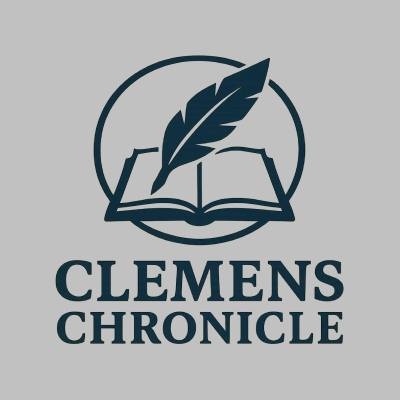Hannibal, Missouri, a town steeped in history and immortalized by Mark Twain, boasts a narrative as rich as the Mississippi River that flows by its banks. Beyond its steamboat lore and literary legacy, Hannibal’s story is also profoundly shaped by the evolution of its educational landscape. From rudimentary frontier classrooms to modern, comprehensive school systems, the journey of learning in Hannibal reflects the town’s growth, its values, and its enduring commitment to nurturing future generations. This article explores how education in Hannibal has transformed over the centuries, mirroring the very progress of the community itself.
Pioneer Classrooms: Hannibal’s First Lessons
In the early 19th century, as Hannibal began to emerge from a modest trading post into a bustling river town, formal education was a luxury, not a given. The very first lessons were often informal, delivered by parents, private tutors hired by more affluent families, or through small, church-affiliated Sunday schools that focused primarily on religious instruction alongside basic literacy. These rudimentary setups laid the foundational stones for learning, emphasizing the critical need for reading, writing, and arithmetic in a burgeoning commercial hub.
As the population grew, the demand for more structured learning environments became apparent. The mid-1830s saw the establishment of Hannibal’s first subscription schools or private academies. These were often one-room affairs, funded directly by parents who paid a fee for their children’s enrollment. Teachers, though perhaps not formally certified by today’s standards, were dedicated individuals who provided instruction across various age groups simultaneously, often in challenging conditions with limited resources.
These early educational efforts, though primitive by modern standards, were vital to Hannibal’s development. They instilled the basic literacy and numeracy skills necessary for commerce, record-keeping, and civic participation, shaping the character of a frontier town that valued progress and self-improvement. The commitment shown by early Hannibal residents to educate their children, even through private means, signaled an understanding that a learned populace was essential for the town’s future prosperity and cultural enrichment.
Twain’s Town Learns: Public Education Grows
The mid-19th century marked a significant shift in educational philosophy across America, with a growing movement towards universal public education. Hannibal, ever a forward-thinking community, embraced this change. Around the time Samuel Clemens (Mark Twain) was growing up in the town, discussions and efforts were underway to establish a more accessible and standardized public school system, moving beyond the fragmented private and subscription models. This period saw the foundational steps taken to create what would become the Hannibal Public School District.
As Hannibal continued to flourish as a port city and regional center, the public school system expanded steadily. New school buildings were constructed, replacing makeshift facilities and accommodating a rapidly increasing student population. Curriculum development became more formalized, and the role of local government in funding, overseeing, and standardizing education grew, ensuring that a broader segment of the community’s children had access to quality instruction, regardless of their family’s economic status.
By the turn of the 20th century, public education had firmly established itself as a cornerstone of Hannibal’s community life. Schools became symbols of civic pride and progress, nurturing generations of citizens who would contribute to the town’s industrial, commercial, and cultural fabric. This era laid the groundwork for a comprehensive educational system, underscoring the community’s belief that an educated populace was crucial for the continued growth and vitality of this historic river town.
Progress and Challenges: Modernizing Hannibal Schools
The 20th century brought about significant transformations in education nationwide, and Hannibal’s schools were no exception. The early decades saw the consolidation of smaller, scattered schools into larger, more centralized institutions, leading to greater efficiency and expanded offerings. Curriculum broadened beyond the basics to include vocational training, arts, and sciences, reflecting a growing understanding of diverse student needs and the demands of an evolving workforce. However, this period also brought challenges, including managing rapid enrollment growth and adapting to changing state and national educational standards.
Following World War II, Hannibal experienced further educational expansion, mirroring national trends of suburban growth and increased emphasis on higher education. New school buildings were constructed or significantly expanded to accommodate the baby boom generation, and technology, albeit slowly at first, began to make its way into classrooms, from typewriters to early instructional films. The latter half of the century also saw an increased focus on equity, special education, and preparing students for an increasingly complex global society, presenting ongoing challenges related to funding, teacher recruitment, and curriculum innovation.
Today, the modernization of Hannibal schools continues as an ongoing process. The Hannibal 60 School District constantly adapts to new pedagogical approaches, integrates cutting-edge technology, and strives to meet the diverse academic and social-emotional needs of its students. This involves continuous professional development for educators, investment in infrastructure, and a focus on creating learning environments that are both engaging and effective, ensuring that Hannibal students are well-prepared for college, careers, and active citizenship in the 21st century.
Community Cornerstone: Education in Modern Hannibal
In contemporary Hannibal, the public school system, specifically the Hannibal 60 School District, stands as a vibrant and indispensable pillar of the community. Encompassing elementary schools, a middle school, and Hannibal High School, the district provides a comprehensive educational experience that goes far beyond traditional academics. It offers a wide array of courses, from advanced placement classes to vocational training programs, ensuring that every student has pathways to success tailored to their interests and strengths.
Beyond the classrooms, Hannibal schools serve as vital community hubs. They host a multitude of extracurricular activities, including competitive sports, thriving arts programs, and various clubs, which foster teamwork, creativity, and leadership skills. These activities often draw significant community participation, with families, alumni, and local businesses rallying to support student achievements. The schools also frequently serve as venues for public events, meetings, and cultural performances, further solidifying their role as central gathering places for residents.
Looking ahead, education in Hannibal remains crucial for the town’s prosperity and quality of life. A strong school system is a key factor in attracting new families and businesses to the area, contributing directly to the local economy and community development. By nurturing the intellectual curiosity and potential of its youth, Hannibal ensures a bright future for its next generation of leaders, innovators, and engaged citizens, continuing a legacy of learning that began in its very first pioneer classrooms.
The journey of education in Hannibal, Missouri, from its humble beginnings in private homes and subscription schools to its robust modern public system, is a testament to the community’s enduring commitment to its children and its future. Each era has brought its own challenges and triumphs, but the underlying dedication to fostering knowledge and opportunity has remained constant. As Hannibal continues to evolve, its schools will undoubtedly remain a cornerstone, reflecting the town’s rich history while actively shaping its vibrant future, ensuring that the legacy of learning continues to thrive in this historic river town.















